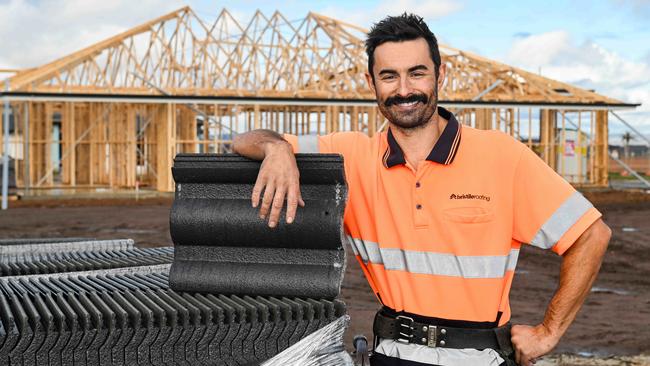Listed: Top SA jobs to fast track home ownership
Leaving school and looking to buy your first home? New research has revealed which uni and TAFE courses will get you onto the property ladder the fastest.

Property
Don't miss out on the headlines from Property. Followed categories will be added to My News.
Young South Australians are facing a brutal choice between the career they love and “the great Australian dream” of owning a home.
New research has revealed the staggering difference in time it can take for professions to save a deposit for a house – a decades-long process for some, including nurses, teachers and those in the creative arts.
But with less time needed to lock in a solid wage, the statistics from online comparison site Finder show learning a trade as a roof tiler, plasterer, carpenter and stonemason could get you on to the property ladder sooner than any other profession.
According to the data, those working in a trade with an annual salary of about $75,000 to $85,000 would have saved enough money for a $300,000 house after six years and 13 years for a $500,000 home.
By comparison, university degree holders with a lower starting wage would need eight to 10 years to afford a $300,000 home.
MORE NEWS
Renovate or detonate – what would you do?
`Elderly chap’ snags city-fringe cottage at most-viewed auction
Adelaide home price growth surpasses nations’ capitals
Head of consumer research Graham Cooke said the bottom rung of the housing ladder was higher up than it ever had been, and as prices continued to rise more Australians’ choice of career path could mean they miss out on ever having a home.
“Your career is your income, and that can make the biggest difference to your lifestyle and your home,” he said.
“Any student who’s trying to make the case to a disgruntled parent for a creative arts degree won’t get a lot of ammunition out of this.”
However, with difficulty getting teachers and nurses to support communities in more affluent areas already apparent, Mr Cooke said the data should also be on the mind of policy makers.
“This could make it more difficult for hospitals to get nurses and schools to get teachers,” he warned.
The Finder research uses typical wages to calculate how long each career would take to save a 20 per cent deposit.
It factors in time spent studying or in an apprenticeship, entry-level incomes, how remuneration is likely to ramp up based on historic data from government surveys conducted for Quality Indicators for Learning and Teaching, as well as inflation-linked growth for wages.
It also deducts income needed to cover the cost of living and rent, which also have inflation factored into them, with feasible savings extrapolated from the remaining income.
Mr Cooke said there were some surprising elements in the data, including that roof tilers could be on the fast track to homeownership at almost the same pace as frontrunner careers such as dentists.
He said this was due, in large part, to them reaching competitive wages relatively faster than those who took on careers with more in-depth education.
“And a lot of money will go into building more homes across Australia,” Mr Cooke said.
Master Builders Association of SA chief executive officer Will Frogley said the research was yet another example of why it paid to be a tradie.
“It’s totally fitting that a roof tiler is well-placed to own their own home, and great to see,” he said.
“At the end of the day, it comes down to demand versus supply. Career and life opportunities via trades are extensive for anybody who is prepared to work.”

Second generation roof tiler Mat Kennett of Kennett Roofing said it made sense to earn good money earlier on in your career if owning a house was a goal.
He said people tackling the trade could earn an hourly rate of $35 to $40, but cautioned that the profession had experienced a decline due to colorbond roofs becoming prominent across new house developments.
“Back in the day (when my father was still working as a roof tiler), there were 125 gangs doing roof tiling – now there are only six … as colorbond now pretty much has a chokehold on the South Australian market,” Mr Kennett said.
“That said, immigration also helps us quite a bit in terms of work as a lot of international people don’t like colorbond and they don’t consider metal as a good product.
“So the demand is still very much there and we do need more people coming through, there’s no doubt about that but it does take a special person to the job as it’s physically demanding and long hours.”


